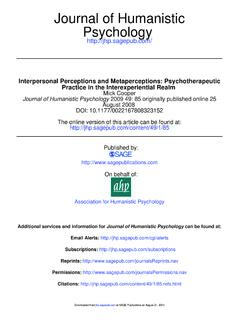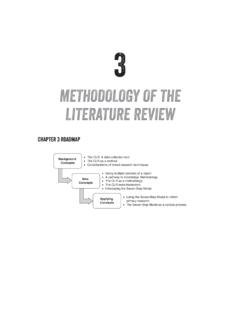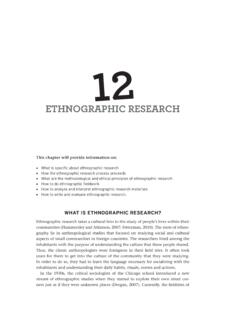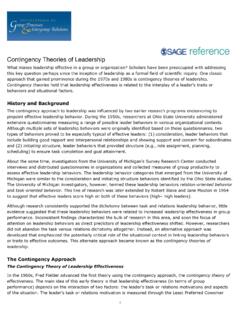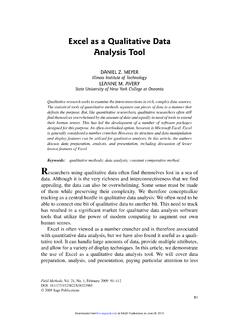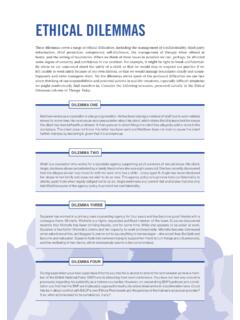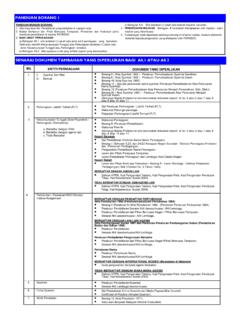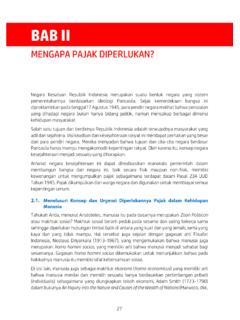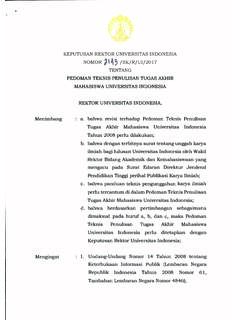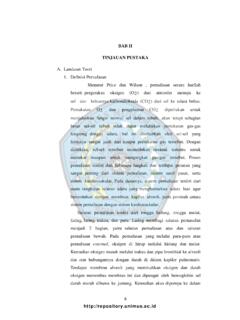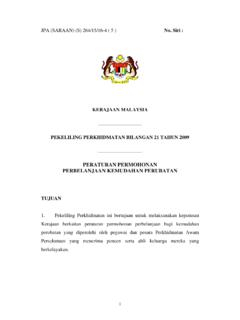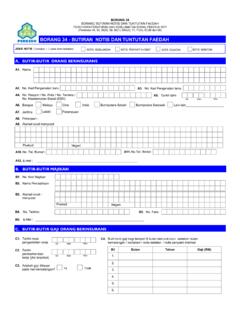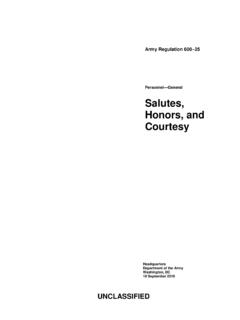Transcription of Encyclopedia of Criminological Theory
1 Encyclopedia ofCriminological TheorySutherland, Edwin H.: DifferentialAssociation Theory andDifferential Social OrganizationContributors: Ross L. MatsuedaEditors: Francis T. Cullen & Pamela WilcoxBook Title: Encyclopedia of Criminological TheoryChapter Title: "Sutherland, Edwin H.: Differential Association Theory and DifferentialSocial Organization"Pub. Date: 2010 Access Date: September 12, 2014 Publishing Company: SAGE Publications, : Thousand OaksPrint ISBN: 9781412959186 Online ISBN: 9781412959193 DOI: pages: 899-907 2010 SAGE Publications, Inc. All Rights PDF has been generated from SAGE knowledge. Please note that the paginationof the online version will vary from the pagination of the print 2010 SAGE Publications, Inc. All Rights knowledgePage 3 of 19 Encyclopedia of Criminological Theory : Sutherland,Edwin H.: Differential Association Theory andDifferential Social Sutherland's development of differential association Theory in 1947 marked awatershed in criminology.
2 The Theory , which dominated the discipline for decades,brought Chicago-style sociology to the forefront of criminology. It is well known thatdifferential association explains individual criminality with a social psychological processof learning crime within interaction with social groups. Less well known is Sutherland'sattempt to explain aggregate crime rates across groups and societies. Here, hespecified the Theory of differential social organization to explain rates of crime with anorganizational process that implies group dynamics. This entry reviews Sutherland'stheory of differential association, discusses attempts at revision, and assesses theempirical status of the Theory . It also examines recent attempts to revisit and elaboratethe concept of differential social organization as well as current areas of research inwhich it is being Association TheorySutherland stated differential association Theory as a set of nine propositions, whichintroduced three concepts normative conflict, differential association, and differentialgroup organization that explain crime at the levels of the society, the individual, andthe group.
3 This section discusses relationships among these concepts, drawing fromRoss L. Matsueda's The Current State of Differential Association Theory . Normative Conflict: The Root Cause ofCrime in SocietyAt the societal level, crime is rooted in normative conflict. For Sutherland, primitive,undifferentiated societies are characterized by harmony, solidarity, and consensus overbasic values and beliefs. Such societies have little conflict over appropriate behaviorsand, consequently, little crime. With the industrial revolution, however, societiesdeveloped advanced divisions of labor, market economies, and a breakdown inconsensus. Such societies become segmented into groups that conflict over interests,values, and behavior patterns. These societies are characterized by specializationSAGE 2010 SAGE Publications, Inc. All Rights knowledgePage 4 of 19 Encyclopedia of Criminological Theory : Sutherland,Edwin H.
4 : Differential Association Theory andDifferential Social Organizationrather than similarity, coercion rather than harmony, conflict rather than tend to have high rates of crime. Sutherland hypothesized that high crime ratesare associated with normative conflict, which he defined as a society segmented intogroups that conflict over the appropriateness of the law: some groups define the lawas a set of rules to be followed under all circumstances, while others define the law asa set of rules to be violated under certain circumstances. Therefore, when normativeconflict is absent in a society, crime rates will be low; when normative conflict is high,societal crime rates will be high. In this way, crime is ultimately rooted in normativeconflict, according to Sutherland and Donald Association Process:Explanation of Individual Criminal ActsAt the level of the individual, the process of differential association provides a socialpsychological [p.]
5 899 ] explanation of how normative conflict in society translatesinto individual criminal acts. Accordingly, criminal behavior is learned in a processof communication in intimate groups. The content of learning includes two importantelements. First are the requisite skills and techniques for committing crime, whichcan range from complicated, specialized skills of computer fraud, insider trading, andconfidence games, to the simple, readily available skills of assault, purse snatching,and drunk driving. Such techniques are necessary but insufficient to produce are definitions favorable and unfavorable to crime, which consist of motives,verbalizations, or rationalizations that make crime justified or unjustified, and includeGresham Sykes and David Matza's techniques of neutralization. For example,definitions favorable to income tax fraud include Everyone cheats on their taxes and The government has no right to tax its citizens.
6 Definitions favorable to drunk drivinginclude I can drive fine after a few beers and I only have a couple of miles to drivehome. Definitions favorable to violence include If your manhood is threatened, youhave to fight back and To maintain respect, you can never back down from a fight. These definitions favorable to crime help organize and justify a criminal line of action ina particular situation. They are offset by definitions unfavorable to crime, such as Taxfraud deprives Americans of important programs that benefit the commonwealth, AllSAGE 2010 SAGE Publications, Inc. All Rights knowledgePage 5 of 19 Encyclopedia of Criminological Theory : Sutherland,Edwin H.: Differential Association Theory andDifferential Social Organizationfraud and theft is immoral, If insulted, turn the other cheek, Friends don't let friendsdrink and drive, and Any violation of the law is wrong.
7 These examples illustrateseveral points about definitions of crime. First, some definitions pertain to specificoffenses only, such as Friends don't let friends drink and drive, whereas others refer toa class of offenses, such as All fraud and theft is immoral, and others refer to virtuallyall law violation, such as Any violation of the law is wrong. Second, each definitionserves to justify or motivate either committing criminal acts or refraining from criminalacts. Third, these definitions are not merely ex-post facto rationalizations of crime butrather operate to cause criminal recognized that definitions favorable to crime can be offset by definitionsunfavorable to crime and, therefore, hypothesized that criminal behavior is determinedby the ratio of definitions favorable to crime versus unfavorable to crime. Furthermore,he recognized that definitions are not all equal. Definitions that are presented morefrequently, for a longer duration, earlier in one's life, and in more intense relationshipsreceive more weight in the process producing individual-level hypothesis of differential association Theory can now be to Matsueda, a person will engage in criminal behavior if the following threeconditions are met: 1.
8 The person has learned the requisite skills and techniques for committingcrime. 2. The person has learned an excess of definitions favorable to crime overunfavorable to crime. 3. The person has the objective opportunity to carry out the to Sutherland, if all three conditions are present and crime does not occur, ora crime occurs in the absence of all three conditions, the Theory would be wrong and inneed of revision. Thus, in principle, the Theory is process of differential association with definitions favorable and unfavorableto crime is structured by the broader social organization in which individuals areembedded. This includes the structures and organization of families, neighborhoods,SAGE 2010 SAGE Publications, Inc. All Rights knowledgePage 6 of 19 Encyclopedia of Criminological Theory : Sutherland,Edwin H.: Differential Association Theory andDifferential Social Organizationschools, and labor markets.
9 This organization is captured by the concept of differentialsocial Social Organization Explanationof Group Rates of CrimeAt the level of the group, differential social organization provides an organizationalexplanation of how normative conflict in society translates into specific group ratesof crime. According to differential social organization, the crime rate of a group isdetermined by the extent to which that group is organized against crime versusorganized in favor of crime. In industrialized societies, the two forms of organizationexist side by side and indeed are sometimes interwoven in complex ways, such aswhen police take bribes and participate in organized extortion, or baseball players takesteroids in full view of teammates. Sutherland hypothesized that the relative strength oforganization in favor of crime versus organization [p. 900 ] against crime explains thecrime rate of any group or society.
10 Thus, compared to suburban neighborhoods, inner-city neighborhoods are weakly organized against street crimes and strongly organizedin favor of such crimes. Compared to other groups, the Mafia is strongly organized infavor of crime and weakly organized against crime. Compared to the United States,Japan is strongly organized against crime and weakly organized in favor of , the group-level process of differential social organization is linked to theindividual-level process of differential association. Groups that are strongly organized infavor of crime display numerous and intense definitions favorable to crime. Conversely,groups that are strongly organized against crime display numerous and intensedefinitions unfavorable to crime. Matsueda suggests that it follows that differential socialorganization explains group crimes rate by influencing the availability of definitionsfavorable and unfavorable to crime within the group.
